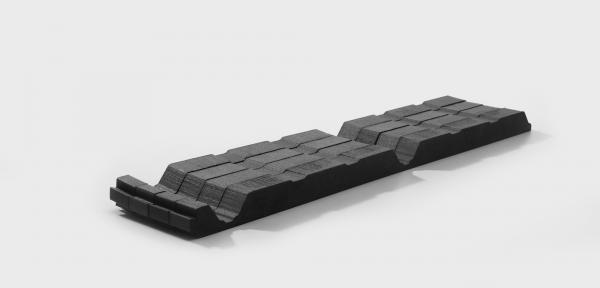Insulation 101: The Key to a Cozy and Energy-Efficient Home

When it comes to creating a comfortable living environment, insulation is often overlooked but plays a crucial role in maintaining an energy-efficient home. Proper insulation not only keeps your home warm during winter and cool during summer, but it can also lead to significant energy savings. In this blog post, we’ll explore the basics of insulation, its benefits, types of insulation materials, and tips for enhancing your home’s insulation.
What is Insulation?
Insulation is a material that resists the transfer of heat, helping to keep your home’s temperature stable. It works by creating a barrier between the inside and outside of your home, reducing heat flow and minimizing the energy needed for heating and cooling. Insulation is typically installed in walls, attics, basements, and crawl spaces, and its effectiveness is measured by its R-value—a higher R-value indicates better insulating properties.
The Benefits of Insulation
1. Energy Efficiency
One of the most significant advantages of proper insulation is improved energy efficiency. A well-insulated home requires less energy to heat or cool, which can result in lower utility bills. Proper home insulation with the effective use of services like GA Natural Gas pay bill can save money, improve comfort, and better manage your energy consumption and bills. According to the U.S. Department of Energy, homeowners can save up to 20% on heating and cooling costs by properly insulating their homes.
2. Comfort
Insulation helps maintain a consistent indoor temperature, ensuring your home remains comfortable year-round. Without proper insulation, you may experience drafts, cold spots, or excessive heat in certain areas, making it difficult to maintain a comfortable living environment.
3. Noise Reduction
Insulation also acts as a sound barrier, reducing noise transmission between rooms and from outside sources. This can be particularly beneficial in urban environments or multi-story homes, where noise can disrupt daily life.
4. Environmental Impact
By reducing energy consumption, insulation also contributes to a lower carbon footprint. Using less energy for heating and cooling means fewer fossil fuels are burned, which is better for the environment. Additionally, many insulation materials are made from recycled or sustainable resources.
5. Increased Home Value
Investing in insulation can enhance your home’s resale value. Potential buyers are increasingly aware of the benefits of energy efficiency, making a well-insulated home more attractive on the market.
Types of Insulation Materials
There are several types of insulation materials, each with its own set of advantages and applications:
1. Fiberglass Insulation
Fiberglass is one of the most common insulation materials. It comes in batts, rolls, and loose-fill forms. Fiberglass insulation is non-combustible, resistant to moisture, and offers good thermal performance. However, it can irritate the skin and lungs, so proper protective gear should be worn during installation.
2. Foam Board Insulation
Foam board insulation is crafted from rigid materials like polystyrene or polyisocyanurate, offering high R-values with minimal thickness. This makes it a great choice for spaces where there’s limited room for insulation. Commonly used in basements, walls, and roofs, foam board insulation can also be paired with foam closure strips to seal gaps and joints effectively, enhancing thermal performance and preventing air leaks.
3. Spray Foam Insulation
Spray foam insulation expands on application, filling gaps and cracks to create an airtight seal. It offers excellent insulation properties and can be used in irregularly shaped spaces. However, it is generally more expensive than other insulation types.
4. Cellulose Insulation
Made from recycled paper products, cellulose insulation is an eco-friendly option. It is often treated with fire retardants and can be blown into walls and attics. Cellulose has good soundproofing qualities and is biodegradable.
5. Mineral Wool (Rock Wool) Insulation
Mineral wool insulation is made from natural or recycled materials and is fire-resistant. It offers excellent thermal and acoustic insulation properties. Mineral wool can be used in walls, attics, and ceilings.
Tips for Enhancing Your Home’s Insulation
- Conduct an Insulation Audit: Assess your home’s insulation by checking areas like the attic, crawl spaces, and walls. Look for gaps, compressed insulation, or areas that seem colder or warmer than others.
- Seal Air Leaks: Before adding insulation, seal any air leaks around windows, doors, and ductwork. Use caulk or weatherstripping to minimize drafts and improve energy efficiency.
- Add Insulation to the Attic: The attic is often the most significant source of heat loss. Ensure that it has adequate insulation to keep your home comfortable.
- Consider Professional Installation: While some insulation types can be installed DIY, others, like spray foam, are best left to professionals. They can ensure proper installation and maximize effectiveness.
- Stay Informed on Local Codes: Different regions have varying insulation requirements based on climate. Be sure to check local building codes for recommendations.
In Conclusion
Investing in proper insulation is one of the most effective ways to enhance your home’s comfort and energy efficiency. By understanding the types of insulation available and taking steps to improve your home’s insulation, you can enjoy a cozy environment while reducing energy costs and your environmental impact. Don’t underestimate the power of insulation—it’s a key component in creating a comfortable and energy-efficient home.